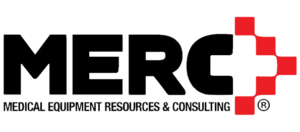4 Essentials for Preparing an Equipment Inventory
A medical equipment inventory is often looked at as a mundane and time-consuming task. At the same time it is vitally important to manage assets and track them in a healthcare facility. What may look simple from the outside is a complex project requiring experience and expertise. Here are four “T’s” that help identify what it takes to prepare for a successful asset inventory:
Threshold – An asset value threshold is often implemented to identify the assets that should be included in the inventory audit. For example, some healthcare systems may use a $1000 threshold, so any item with values equal to or greater than that acquisition value would need to be included. This process means expertise in the value of a wide variety of assets is needed to know what to include and what not to include in the inventory.
Tagging – Placing an asset tag on equipment may seem simple, but proper placement helps to preserve the tag and make it readily located (and scanned), improving future asset management. Also, choosing open “real estate” on the device can be challenging – it is important tagging does not interfere the ongoing use of the equipment for patient care, and does not cover up access to other identifiers, such as Biomed tags.
Timing – Timing is important for various reasons in planning for an inventory. Scheduling the inventory during optimal times of the week and month make it easier on both the facility and the inventory team to gather the information and provide a complete and comprehensive inventory, creating greater efficiency and minimizing impact to operations and patient care.
Team – The team that performs the inventory is a critical element in the planning and process of the asset inventory. Selecting a team that has the needed expertise and experience around healthcare and the type of assets being inventoried will help the project move faster and result in more accuracy. A team that is also trained and prepared for a healthcare environment also helps integrate the team into an active patient care facility.

